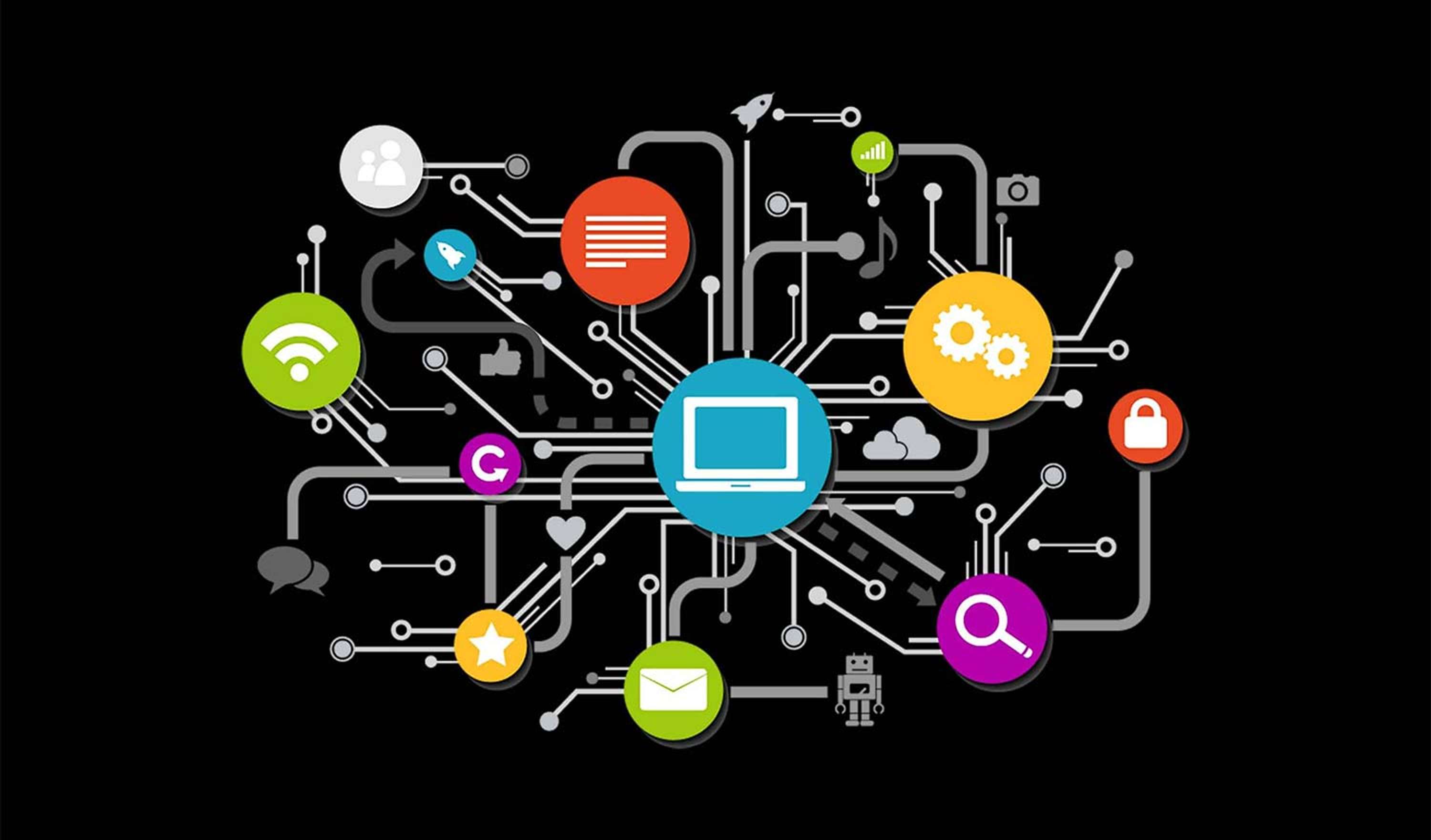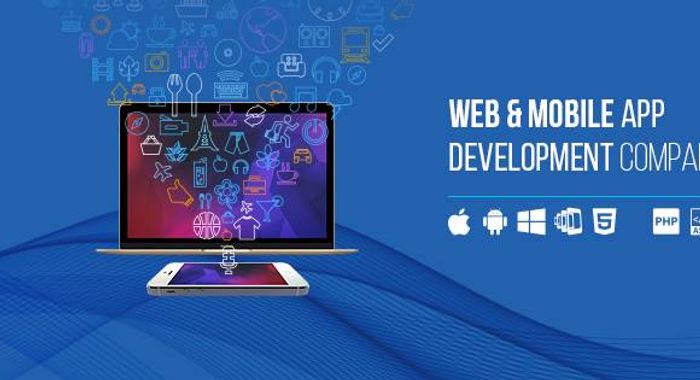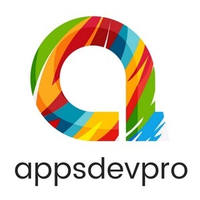In today's fast-paced and digitally-driven world, businesses are constantly searching for ways to streamline their processes and boost efficiency. One of the main obstacles organizations encounter is integrating their diverse applications and systems to function seamlessly together. This is where Enterprise Application Integration (EAI) comes in as a vital solution, acting as a bridge that connects different technologies and applications within the organization.
In this blog post, we will delve into the concept of EAI and explore its significance in the digital landscape. Additionally, we will discuss the advantages of implementing EAI and provide a practical guide for businesses interested in adopting it in their operations. So, let's uncover how enterprise application integration can effectively bridge the digital gap for businesses.
Understanding the Basics: What is Enterprise Application Integration?
In today's digital world, Enterprise Application Integration (EAI) plays a vital role. It acts as a bridge that links various technologies and applications within an organization, facilitating smooth communication and collaboration. But what does EAI really mean?
Essentially, enterprise application integration (EAI) involves the seamless integration of different applications, systems, and databases within an organization. The aim is to facilitate smooth data flow and optimize functionality. This entails connecting various systems like customer relationship management (CRM), enterprise resource planning (ERP), human resource management (HRM), and more to establish a cohesive and streamlined digital infrastructure.
EAI plays a vital role in enabling businesses to optimize their processes, improve productivity, and enhance decision-making. By integrating different applications and systems, organizations can eliminate data silos, reduce duplication of efforts, and enhance data accuracy. This allows for a holistic view of operations, enabling businesses to make informed decisions based on real-time data.
The objective of Enterprise Application Integration (EAI) is to facilitate seamless communication between applications, regardless of their disparities in platforms, protocols, or technologies. This is accomplished by utilizing integration middleware as a connecting agent for the various applications. Integration middleware can take the form of enterprise service buses (ESBs), messaging systems, or integration platforms.
By leveraging EAI, businesses can optimize their operations, automate processes, and facilitate seamless collaboration. For instance, integrating a CRM system with a marketing automation platform ensures synchronized customer data, enabling more personalized marketing campaigns and enhanced customer satisfaction.
Therefore, Enterprise Application Integration (EAI) plays a crucial role in establishing digital connectivity within organizations. It enables the seamless integration of various applications and systems, resulting in a unified and efficient digital ecosystem. By embracing EAI, businesses can leverage this seamless connectivity to boost productivity, streamline processes, and make informed decisions based on real-time data. In the upcoming section, we will explore further the significance of EAI in facilitating smooth digital connectivity.
The Role of EAI in Facilitating Seamless Digital Connectivity
In the modern digital world, businesses heavily depend on a wide range of applications and systems to perform their daily tasks. However, these applications often function independently, making it difficult for them to communicate and exchange data efficiently. This is where Enterprise Application Integration (EAI) becomes essential in enabling smooth digital connectivity.
The main purpose of Enterprise Application Integration (EAI) is to establish connections between various applications, systems, and databases within an organization. This integration facilitates the smooth transfer of data and ensures seamless functionality. By integrating these distinct systems, businesses can eliminate data silos and create a unified digital infrastructure. Consequently, information sharing and collaboration become effortless across different departments and teams.
EAI serves as the glue that connects various applications together, regardless of their differences in platforms, protocols, or technologies. Integration middleware, such as enterprise service buses (ESBs), messaging systems, or integration platforms, acts as the bridge between these applications, ensuring seamless communication and data exchange.
By implementing Enterprise Artificial Intelligence (EAI), businesses can optimize their operations, automate essential processes, and boost collaboration. For instance, seamlessly integrating a customer relationship management (CRM) system with a marketing automation platform guarantees synchronized customer data. This synergy enables businesses to run more targeted marketing campaigns and enhance overall customer satisfaction.
Furthermore, implementing enterprise AI (EAI) in businesses offers a comprehensive perspective on their operations by integrating data from various systems. This facilitates real-time insights and enables data-driven decision-making. By having access to accurate and up-to-date information, organizations can streamline their processes, pinpoint bottlenecks, and make well-informed decisions that promote growth and enhance efficiency.
EAI also helps in integrating external applications and systems, like supplier portals or customer-facing applications, with internal systems. This smooth connectivity allows organizations to expand their digital ecosystem beyond their own infrastructure, fostering partnerships and improving the overall customer experience.
Key Components and Processes of EAI
Enterprise Application Integration (EAI) is a multifaceted process that brings together different components and processes to establish connections between various applications and systems within an organization. These essential components and processes serve as the foundation of EAI, facilitating smooth digital connectivity.
Integration middleware is a critical element of Enterprise Application Integration (EAI). It serves as the connection between various applications, enabling seamless communication and data sharing. This essential bridge can take the form of enterprise service buses (ESBs), messaging systems, or integration platforms. By facilitating data exchange, transformation, and synchronization among different applications and systems, integration middleware plays a crucial role in ensuring efficient operations.
Data mapping and transformation are crucial aspects of EAI (Enterprise Application Integration). This is because different applications often use varying data formats and structures. By performing data mapping and transformation, we can ensure accurate data exchange between these applications. This process involves mapping data elements from one application to another and transforming them to meet the required format. Ultimately, data mapping and transformation guarantee consistency and integrity of the data throughout the integration process.
EAI, or Enterprise Application Integration, goes beyond just middleware and data mapping. It also encompasses process orchestration and workflow automation. Process orchestration is essential for seamlessly coordinating various activities and tasks across multiple applications and systems. It ensures that data flows smoothly from one application to another, triggering the necessary actions and processes along the way. Conversely, workflow automation enables the automation of manual and repetitive tasks, leading to increased efficiency and decreased chances of human error.
Security and governance are crucial aspects of EAI (Enterprise Application Integration). When organizations integrate their applications and systems, it becomes essential to prioritize the security and privacy of their data. This requires implementing robust security measures like authentication, authorization, and encryption to safeguard sensitive information. Moreover, governance processes ensure that the integration aligns with organizational policies and meets regulatory requirements.
Hence, the essential elements and operations of EAI encompass integration middleware, data mapping and conversion, process orchestration, workflow automation, security measures, and governance. These components collaborate harmoniously to facilitate smooth digital connectivity and ensure efficient data exchange among various applications and systems. By comprehending and efficiently implementing these elements and processes, organizations can leverage EAI's potential to enhance operational efficiency and propel digital transformation.
The Impact and Benefits of EAI on Business Performance
In today's highly competitive business environment, organizations are always searching for ways to enhance their performance and gain a competitive advantage. One such solution that can greatly impact business performance is Enterprise Application Integration (EAI).
Implementing Enterprise Application Integration (EAI) can have several advantages for organizations, enhancing different aspects of their operations. Firstly, EAI enables streamlined processes and increased efficiency. By integrating various applications and systems, businesses can eliminate manual tasks, reduce redundant efforts, and automate processes. This not only saves time but also enhances productivity and reduces the potential for human error. With EAI, organizations can optimize their workflows to make them more efficient and effective.
In addition, Enterprise AI (EAI) plays a crucial role in enhancing decision-making by offering real-time data. By integrating various systems, businesses can centralize and harmonize their data, obtaining a comprehensive overview of their operations. This empowers organizations to make well-informed decisions based on precise and current information. Real-time data accessibility enables companies to swiftly respond to market fluctuations, identify emerging trends, and capitalize on growth opportunities.
Improved collaboration and communication within an organization is another major benefit of Enterprise Application Integration (EAI). By connecting various applications and systems, EAI facilitates smooth data exchange and sharing across different departments and teams. This eliminates data silos and promotes cross-functional collaboration. With enhanced collaboration, employees can work more efficiently together, effortlessly share information, and make better-informed decisions.
Moreover, EAI (Enterprise Application Integration) enhances customer satisfaction by enabling a seamless and personalized customer experience. By integrating systems, businesses can ensure that customer data remains synchronized across various touchpoints. This eliminates the need for customers to repeatedly provide their information and reduces inconsistencies in their interactions with the organization. As a result, customer satisfaction levels increase, leading to higher loyalty and ultimately fostering business growth.
Overcoming Challenges and Mitigating Risks in EAI Implementation
Implementing Enterprise Application Integration (EAI) can be a complex and challenging process for businesses. However, by being aware of the potential challenges and risks involved, organizations can better prepare and mitigate these issues. In this section, we will explore some of the common challenges faced during EAI implementation and provide strategies for overcoming them.
Data integration poses a significant obstacle when implementing EAI. Many organizations operate various applications and systems with different data formats and structures. Integrating these disparate systems can lead to inconsistencies in data and compatibility problems. To address this challenge, organizations should consider investing in data mapping and transformation tools that can standardize and convert data across formats. This ensures accurate exchange and sharing of data between applications.
System complexity is another challenge that organizations face. As they integrate multiple applications and systems, the overall infrastructure becomes more complex. This increased complexity can make it challenging to manage and maintain the integrated system. To overcome this challenge, organizations should invest in robust integration middleware that offers centralized control and monitoring of the integrated environment. In addition, establishing clear governance processes and guidelines can help organizations effectively manage the complexities of their integrated system.
Implementing EAI brings about concerns regarding security and privacy. The integration of multiple applications and systems heightens the potential for data breaches and unauthorized access. To counteract these risks, organizations should enforce strong security measures like encryption, authentication, and authorization protocols. Regularly conducting security audits and vulnerability assessments is also crucial to detect and resolve any potential weaknesses within the integrated environment.
Implementing EAI can be a complex task, as it often faces challenges like resistance to change and lack of buy-in from stakeholders. To overcome these hurdles, it is crucial to involve stakeholders early on in the process. Clearly communicating the benefits of EAI and addressing any concerns or resistance they may have helps build consensus and ensures successful adoption of the integrated system. Engaging stakeholders in the planning and decision-making process fosters a sense of involvement and ownership, leading to smoother implementation.
To summarize, implementing EAI (Enterprise Application Integration) presents challenges and risks. However, organizations can mitigate these impacts and ensure a seamless implementation process by taking proactive measures. This includes investing in suitable tools, establishing transparent governance processes, and addressing security concerns. By executing well-planned strategies, organizations can effectively leverage the power of EAI to streamline operations, foster collaboration, and drive digital transformation.
Future Perspectives: How Emerging Technologies are Shaping EAI
With technology progressing rapidly, the future of Enterprise Application Integration (EAI) appears very promising. Emerging technologies are revolutionizing the EAI landscape, bringing about new possibilities and opportunities for businesses to improve their digital connectivity. In this section, we will delve into some of these key emerging technologies that are shaping the future of EAI and explore how businesses can utilize them to stay ahead in their industry.
Cloud computing is a groundbreaking technology that has had a significant impact on the field of enterprise application integration (EAI). By using cloud-based solutions, organizations can store and access their data and applications remotely, eliminating the need for on-site infrastructure. These cloud-based integration platforms offer numerous benefits, including scalability, flexibility, and cost-efficiency. They enable businesses to seamlessly connect their applications and systems. Additionally, cloud-based EAI solutions provide a centralized and scalable infrastructure that can easily adapt to evolving business requirements. They also support integration with various applications both internally within the organization and externally with other systems.
AI is not the only technology making waves in EAI; artificial intelligence (AI) has also had a transformative impact. AI-powered integration platforms enable businesses to automate complex integration tasks, reducing the need for manual work and improving data processing accuracy and speed. By analyzing data patterns and identifying anomalies, AI algorithms optimize integration processes to ensure efficient data flow. This use of AI in EAI helps organizations enhance the quality of data exchange, minimize errors, and make faster, more informed decisions based on data.
With the rapid growth of connected devices in the Internet of Things (IoT), businesses are facing new challenges in integrating these devices with their existing systems. This is where Enterprise Application Integration (EAI) comes into play. EAI allows organizations to seamlessly connect IoT devices with their applications and systems, enabling real-time data exchange and facilitating monitoring and control. By leveraging EAI, businesses can optimize their operations, improve efficiency, and provide enhanced customer experiences. As IoT continues to shape the landscape of technology, EAI becomes increasingly important for businesses to fully harness its potential.
Blockchain technology is making its presence felt in the EAI landscape. Its decentralized and secure nature allows for trust and transparency in exchanging data between different applications and systems. By incorporating blockchain into EAI, businesses can guarantee data integrity, remove the need for intermediaries, and simplify intricate transactions. This has the potential to revolutionize sectors like finance, supply chain management, and healthcare, where accuracy and security of data are crucial.
Conclusion
In the rapidly changing world of technology, businesses must continuously adjust to remain competitive. An essential solution for organizations aiming to close the digital divide and enhance their operations is Enterprise Application Integration (EAI). In this blog post, we will delve into the concept of EAI, discussing its significance in today's digital landscape and exploring the benefits it offers to businesses.
By implementing EAI, organizations can streamline their processes, increase efficiency, and enhance decision-making. The integration of various applications and systems allows for the elimination of data silos and the reduction of duplication of efforts. This, in turn, leads to improved productivity and data accuracy, providing businesses with a holistic view of their operations and empowering them to make informed decisions based on real-time data.
Enterprise Application Integration (EAI) acts as a connector that unifies various applications, systems, and databases within an organization. By utilizing integration middleware like enterprise service buses or messaging systems, businesses can achieve seamless communication and collaboration between different technologies. This connectivity not only enables process automation but also enhances collaboration and widens the digital ecosystem beyond an organization's infrastructure.
In this blog post, we've discussed the important elements and steps involved in implementing EAI (Enterprise Application Integration). We've also examined some of the obstacles and potential risks organizations may face when adopting EAI. Additionally, we've shared success stories that showcase how EAI can greatly enhance business performance.
In the future, the field of EAI will be influenced by cutting-edge technologies like cloud computing, artificial intelligence, Internet of Things (IoT), and blockchain. Organizations that adopt and effectively utilize these technologies will stay ahead of the competition and propel their digital transformation efforts.
In conclusion, Enterprise Application Integration (EAI) is crucial for digitally connecting businesses and optimizing their operations. By adopting EAI, organizations can streamline processes, improve collaboration, and make data-driven decisions. As technology evolves, it becomes increasingly important for businesses to embrace EAI and leverage emerging technologies to drive growth and remain competitive.
If you're looking to unlock the potential of Enterprise Application Integration, it's worth considering partnering with a trusted app development company. Their wealth of knowledge and expertise can ensure a seamless implementation that propels your business forward in the digital world.




